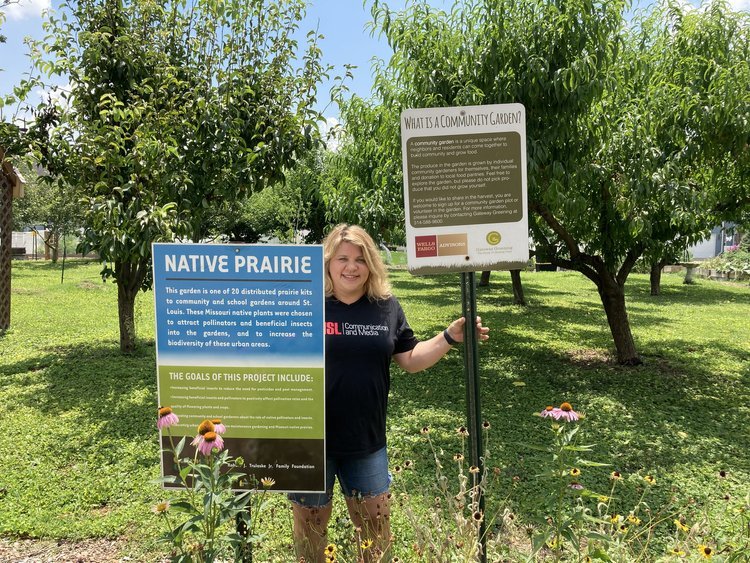research
Helping people help bees
Native pollinators need us to be more effective communicators.
UMSL Communication & Media Professor Dr. Lara Zwarun studies the impact of messaging on yard signs.
There’s no time to waste.
To have meaningful impact, efforts to protect pollinators (as well as the environment) must be widely adopted. What’s needed is strategic messaging to a wide audience—including people who aren’t informed about or interested in the topic.
Reaching and persuading this audience is challenging. To meet this challenge, understanding science communication is valuable. Understanding how to brand science is invaluable.








